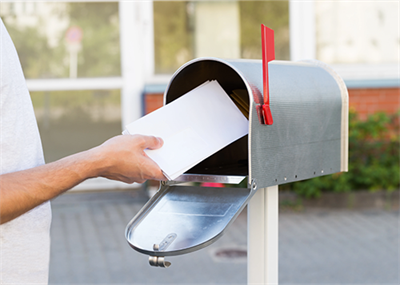 The COVID-19 crisis has impacted all of us, even the United States Postal Service (USPS) — the fate of which is very much intertwined with the commercial print and packaging industry. Our industry is a crucial part of a private sector postal-reliant industry that generates $1.6 trillion in sales. This mailing industry ecosystem employs 7.3 million workers across the entire supply chain: postal and print equipment manufacturing, paper, printing, publishing, packaging, and business segments that mail heavily (think retail and financial services) in order to promote, sell, and invoice customers.
The COVID-19 crisis has impacted all of us, even the United States Postal Service (USPS) — the fate of which is very much intertwined with the commercial print and packaging industry. Our industry is a crucial part of a private sector postal-reliant industry that generates $1.6 trillion in sales. This mailing industry ecosystem employs 7.3 million workers across the entire supply chain: postal and print equipment manufacturing, paper, printing, publishing, packaging, and business segments that mail heavily (think retail and financial services) in order to promote, sell, and invoice customers.
But while the USPS enterprise rivals some of the largest corporations in America in size and scope, it is unique in that it is a quasi-government agency that must operate within the confines of the Postal Regulatory Commission, a Board of Governors, and — ultimately — Congress. There are also four major labor unions that represent postal workers, each with its explicit labor contract. Unlike a private entity that has flexibility to respond to economic conditions by, say, raising or lowering prices, adjusting operating hours, or reassigning staff, the USPS operates under many restrictions.
At the same time, the USPS receives no financial support from taxpayers (aside from a small amount appropriated for mail for the blind and overseas voting); it is expected to turn a profit based on its business sales alone. From the largest online retailers to Aunt Minnie mailing a birthday card in Topeka, Kan., revenue supporting the nation’s postal service is generated by its customers.
When the USPS faces uncertainty, there is clearly a ripple effect in the commercial print and packaging industry that relies on the delivery network as a critical logistics partner. Our industry has seen this movie before in recent times: after the 9/11 terrorist attacks, following the Great Recession, and now — in technicolor — in the midst of a pandemic. Ironically, we’re seeing it at a time when the indispensable role of USPS is at its height, with vital deliveries of medicines, groceries, educational materials, personal protective equipment, and the like soaring since March; not to mention the delivery of government checks to individuals, public health literature, and sources of printed, mailed news to keep us informed and safe.
Just as the USPS is essential during this time of crisis, the commercial print mail, advertising, and promotion sector will be essential to the nation’s post-pandemic economic recovery. But with USPS forecasting COVID-19-related revenue losses that could range from $7 billion on the rosy end to $17 billion through the end of fiscal year 2021 as a maximum hit, our industry has cause for concern.
PRINTING United Alliance is urging Congress to add USPS to the mix of industries receiving COVID-19 stimulus funding. Yes, the ultimate impact of direct pandemic injury versus preexisting financial conditions of the USPS is debatable. Yes, there are unanswered underlying assumptions as to how package delivery volume will fare when more Americans return to pre-March 2019 in-store purchasing. What isn’t debatable is the need for consumer and business confidence in a reliable, affordable postal service that will continue to deliver during and after these uncertain times.
Please help us tell Congress that the Postal Service is critical, especially now, with more Americans than ever relying on delivery. Visit printing.org/programs/government-affairs/print-powers-america-action-center or text “MAIL” to 52886 to make your voice heard and ask Congress to make sure our Postal Service can keep delivering. Your customers, employees, and industry peers can take action, too — we’re all in this together.